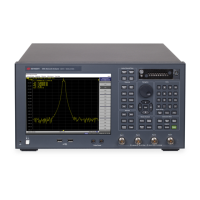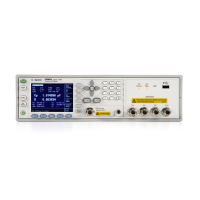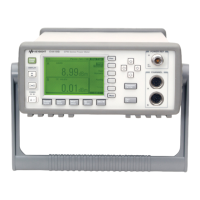E5071C
1026
Receiver Calibration
• Overview
• Measurement of Receiver Calibration Data & Calculation of
Calibration Coefficient
• Turning ON/OFF Receiver Error Correction
Other topics about Performing Calibration
Overview
The E5071C has a receiver calibration capability to calibrate the gain for
each receiver in an absolute measurement.
Measurement of Receiver Calibration Data & Calculation of Calibration Coefficient
• Before starting a measurement of receiver calibration data, you
must connect a THRU between the source port at which power
calibration was applied and the receiver port on which you want
to implement receiver calibration.
Use the following command for the measurement of receiver calibration
data and calculation of calibration coefficient. The value following REC
signifies a receiver port number, and the value given as an argument is a
source port number. Specifying the same port to both the receiver port
and source port will cause an error.
:SENS{1-160}:CORR:REC{1-4}:COLL:ACQ
• From Firmware rev 9.2, you can calibrate the receiver and
transmitter port independently.
Use the following command to calibrate the receiver port:
:SENS{1-160}:CORR:REC{1-4}:COLL:RCH:ACQ
Use the following command to calibrate the transmitter port:
:SENS{1-160}:CORR:REC{1-4}:COLL:TCH:ACQ
Once the measurement is completed, calculation of the calibration
coefficient takes place automatically, turning on receiver error correction
automatically.
• The power calibration information on both the receiver port and
source port is used to calculate calibration coefficients. The
accuracy of receiver calibration will increase if power calibration
is implemented for both the receiver port and the source port
before starting receiver calibration. For information on power
calibration, refer to Power Calibration.
• Verify the frequency of each port before starting a frequency
offset sweep. Since this command does not change the
frequency setting, you cannot expect a correct measurement

